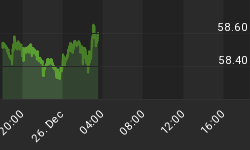Many strong proponents of free banking argue that something else than 100% reserves behind emitted money will lead to unstable banks. The reason is that with for example 50% reserves the banks can emit twice as much money as they actually have.
Furthermore, the reserves themselves need to be in the form of gold or silver. The reasons for this is that these precious metals have the characteristics of money, they are real and are highly liquid.
So nothing but 100% gold or silver reserves would do, we are told.
The same strong proponents consequently completely dislike the idea of keeping so-called Real Bills as reserves. Real Bills are short term bills of exchange, maturing within 3 months. They are called 'real' bills since the bills of exchange are backed up with real goods and services on the way to be delivered to the buyer. So they are as real as any product and service and highly liquid since the bills are maturing within three months and could be sold at the going discount rate.
We won't throw ourselves into the debate of 100% gold/silver reserves vs Real Bills. Why? Because we think it might be a false dichotomy, a highly unfortunate false dichotomy.
We can see this by looking at a historical example of 100% reserves. According to the German banking act of 1873, all banks, including the central bank, were required to hold 33.3% in gold reserves and the balancing 66.6% in Real Bills. Here are the actual words:
The bank is obliged to keep a reserve of at least 33 1/3 per cent of the total amount of its outstanding notes in German currency, imperial treasury notes, gold bullion, or foreign coins, the pound fine calculated at 1,392 marks; and the balance in discounted bills, which mature in three months, and which are indorsed by three, and in exceptional cases by two, persons known to be solvent.
What does this tell us? Well, it tells us that in the days of banks competing by emitting their own money, banks were required to hold 100% reserves of highly liquid assets. These reserve assets could be in gold or Real Bills.
But how can Real Bills compare to gold? Yes, Real Bills are real only insofar there actually are products and services that are delivered. There might be cases of fraud, but that would hurt the bank so they would try to avoid it. That's why they had to be endorsed by three persons known to be solvent. After all, a bank might find fraudsters handing them tungsten instead of gold as well, so no big difference there.
Real Bills are IOU's, i.e. debt, but when the product or service is completely delivered, the debt is extinguished. They help producers to finance the going expences, including the wage funds. The Real Bills could also be traded at any time at the going discount rate, thus providing short-term income to people that have exessive short-term cash (like a producer sometimes does).
Gold isn't perfect as a reserve, neither are Real Bills. But they have served as good reserves before and perhaps should be considered again. 100% reserves of gold and Real Bills must surely be preferred to the current situation of practically 0% bank reserves.
So instead of maintaining a false dichotomy, why not join hands against the real fraud of Zero-Reserves-Banking?
At Golden-Markets.com we track the World's major stock exchanges and currencies in terms of a single currency, gold. Subscribe to our free weekly or monthly newsletters.















